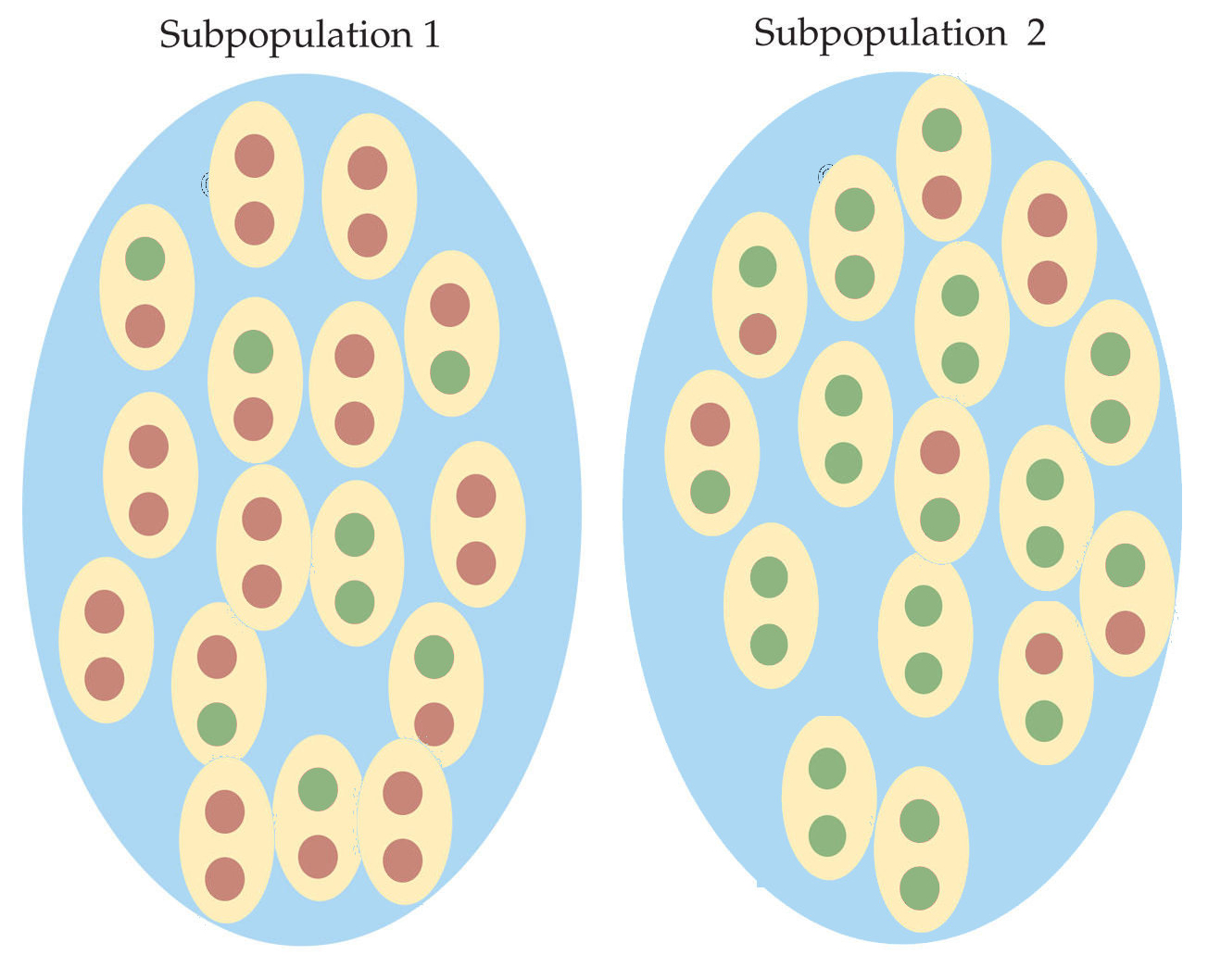
Heterozygote deficiency in subpopulations with differing allele frequencies:
Wahlund Effect
Two subpopulations of N = 16
diploid individuals in a single species differ in the
frequency of brown and
green alleles at a
locus. Let q = f(brown). In Subpopulation 1, q = 24/32 = 0.75
, and in Subpopulation 2, q = 8/32 = 0.25.
In both populations, the observed frequency
of heterozygotes is 6 / 16 = 0.375, and the expected
frequency is (2)(0.75)(1 - 0.75)(16) = 0.375.
Thus Hobs = Hexp.
If the two sub-populations were treated as a single population, the observed allele frequency would be q = 0.50 and the expected frequency of heterozygotes = (2)(0.50)(1 - 0.50) = 0.500. The deficiency of heterozygotes is (Hexp - Hobs) / Hexp = (0.500 - 0.375) / 0.500 = 0.25.
If two (or more) populations with different allele frequencies are analyzed as a single population, it will be the case that Hobs < Hexp. This deficiency of heterozygotes from expectation is called the Wahlund Effect, after the scientist who first observed it in combining genetic data from two cod populations from different parts of the Baltic Sea and the waterways leading into it.
If the two sub-populations were treated as a single population, the observed allele frequency would be q = 0.50 and the expected frequency of heterozygotes = (2)(0.50)(1 - 0.50) = 0.500. The deficiency of heterozygotes is (Hexp - Hobs) / Hexp = (0.500 - 0.375) / 0.500 = 0.25.
If two (or more) populations with different allele frequencies are analyzed as a single population, it will be the case that Hobs < Hexp. This deficiency of heterozygotes from expectation is called the Wahlund Effect, after the scientist who first observed it in combining genetic data from two cod populations from different parts of the Baltic Sea and the waterways leading into it.
Text material © 2024 by Steven M. Carr